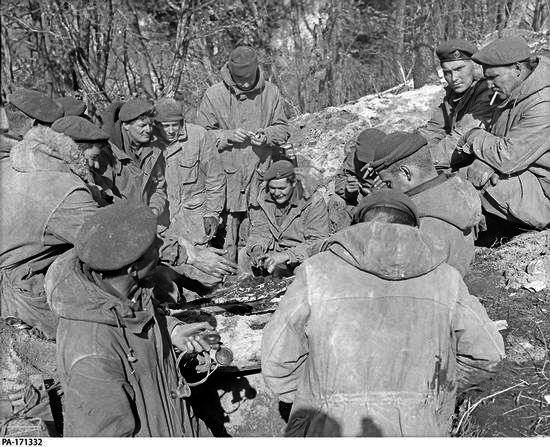Wartime Heritage
ASSOCIATION

The Canadians at the Battle of Kapyong – April 1951
The Battle of Kapyong, fought from April 22 to 25, 1951, was one of the most significant engagements involving Canadian troops
during the Korean War. It marked a defining moment for the 2nd Battalion, Princess Patricia’s Canadian Light Infantry (2 PPCLI), who
played a critical role in halting a major Chinese offensive that threatened to break through United Nations lines and reach the South
Korean capital, Seoul.
In the spring of 1951, the Chinese People’s Volunteer Army launched a large-scale assault as part of their Spring Offensive. Their
objective was to drive south through the Kapyong Valley, a key route that led directly to Seoul.
As Republic of Korea (ROK) forces began to collapse under the pressure of the Chinese advance, the United Nations Command rushed
reinforcements to the area. Among them was the 27th British Commonwealth Infantry Brigade, which included the 2 PPCLI from
Canada, the 3rd Battalion, Royal Australian Regiment (3 RAR), and British and New Zealand support units.
The 2 PPCLI, under the command of Lieutenant Colonel Jim Stone, was ordered to take up defensive positions on Hill 677, a
strategically important height overlooking the Kapyong Valley. To their east, the Australians of 3 RAR occupied Hill 504.
On the night of April 23, Chinese forces launched a fierce assault on the Australian positions. Despite a determined defense, the
Australians were eventually forced to withdraw, leaving the Canadians as the last major obstacle in the path of the advancing Chinese
forces.
Throughout the night of April 24 and into the
early hours of April 25, the 2 PPCLI came under
relentless attack. The Chinese launched wave
after wave of infantry assaults, supported by
heavy machine-gun and mortar fire. The fighting
was intense and often at close quarters, with
Canadian soldiers engaging in hand-to-hand
combat to repel the attackers. At one critical
moment, Captain J.G.W. Mills, commanding D
Company, made the extraordinary decision to call
down artillery fire on his own position in order to
break up a Chinese assault that threatened to
overrun his troops. The gamble paid off.
Canadian soldiers took cover in their trenches
while the artillery barrage devastated the
attacking force.
Despite being surrounded and running low on
food, water, and ammunition, the Canadians held
their ground. American aircraft dropped supplies
to the beleaguered battalion, allowing them to
continue the fight. By the morning of April 25,
the Chinese had withdrawn, having suffered
heavy casualties and failed to break through the
Canadian line. The stand made by the 2 PPCLI
was instrumental in halting the Chinese advance
and stabilizing the front.
The cost of the battle for the Canadians was 10 killed and 23 wounded. In recognition of their extraordinary bravery and
effectiveness under fire, the 2nd Battalion, Princess Patricia’s Canadian Light Infantry was awarded the United States Presidential
Unit Citation, an honor rarely given to non-American units and the only time it has been awarded to a Canadian unit during the
Korean War.
Battle of Kapyong – April 1951

copyright © Wartime Heritage Association
Website hosting courtesy of Register.com - a web.com company
Remembering the Korean War

Riflemen of 2nd Battalion, Princess Patricia Canadian Light Infantry, gather
around a fire in the early morning. April 16, 1951.


- World War I - Menu
- WWI Stories and Articles
- Photos - Yarmouth Soldiers
- Selection of World War I Songs
- WWI Casualties of Yarmouth, NS
- Those Who Served - Yarmouth, NS
- WWI Casualties Digby Co. NS
- WWI Casualties Shelburne Co. NS
- Merchant Mariners (1915) Yarmouth, NS
- Canadian Forestry Corps - Non Yarmouth Birth/Residence Enlistments
- US Draft Registry - Yarmouth NS Born


- World War II - Menu
- WWII Stories and Articles
- Telegraphist Air Gunners
- WWII Casualties of Nova Scotia
- US Casualties with NS Connection
- Far East/Pacific Casualties with NS Connection
- Merchant Navy Casualties Nova Scotia
- Nova Scotia WWII Casualties Holten Canadian War Cemetery
- D-Day Casualties - Nova Scotia
- CANLOAN Program Casualties - Nova Scotia
- Battle of the Bulge Casualties - Nova Scotia
- WWII Casualties Yarmouth NS
- Yarmouth Casualties - RCAF RAF Canadian Army WWII
- Yarmouth Co., Marriages WWII
- Casualties Non-Born/Residents with Connection to Yarmouth Co., Nova Scotia.
- WWII Casualties Digby Co., NS
- Non-Nova Scotian WWII Casualties Buried in Nova Scotia
- WWII RCAF Casualties Aged 16-18
- Brothers/Sisters Who Served - World War II













